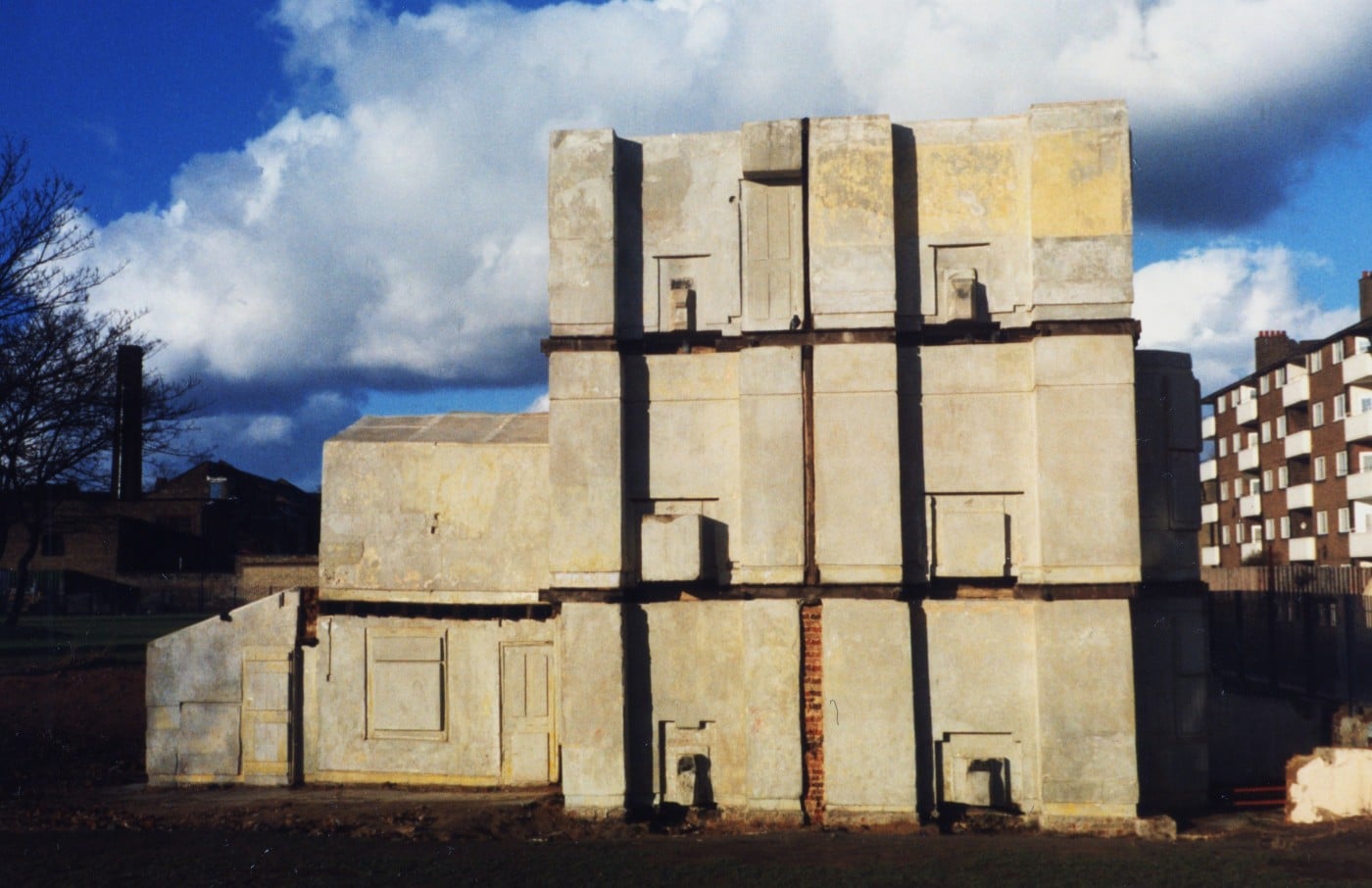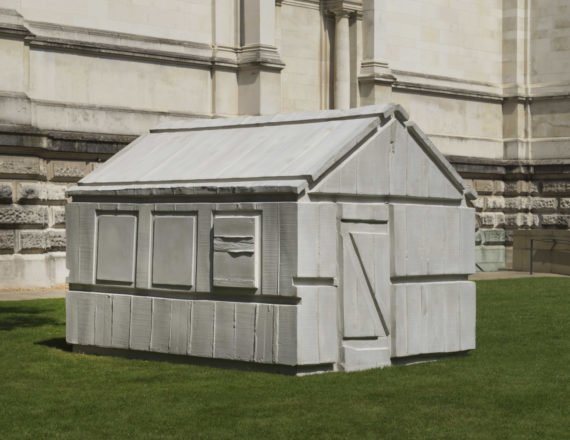
Rachel Whiteread’s House
A metal sign among the found objects, tiny moulds, and notebooks, selected and arranged from across Rachel Whiteread’s 30 year career, reads: ‘Ancient Monuments Acts, 1913 and 1931. Any person who injures or defaces this monument may be fined and ordered to pay the costs of repairs or may be imprisoned.’ The display case is located in the foyer before the exhibition and, along with photographs of Whitereads public installations and a film documenting the construction and demolition of House (1993-4), sets up the retrospective as a study in sculpture as an interrogation of public structures and space. It’s not clear where the metal sign came from, or whether Whiteread found it or removed it from its monument, but either way its removal points to the ephemeral nature of public buildings. Decay, exposure to the elements, or vandalism mean that, Ancient Monuments Acts or no, any structure’s days are numbered.
I spent as much time in the foyer as I did in the actual exhibition, not least because the half hour film documenting House, a concrete cast of a Victorian terraced house, is fascinating. The terraced house’s own demolition revealed the cast inside, allowing it to leave an 80-day haunt before the cast itself was destroyed. House is the ultimate restatement of the building’s inevitable redundancy: through no fault of its own, as the result of forces over which it had no control, the 19th century home becomes not fit for purpose and is flattened to make space for new builds. The only afterlife available to it is the equally useless sculpture (no one can live inside a concrete cast).

Rachel Whiteread’s Chicken Shed
Are the construction workers who demolish first the house, then the sculpture, making or destroying art? What did they think they were doing (if that’s the deciding factor)? One effect of seeing Whiteread’s work displayed in a single open room, organised thematically and by material rather than chronologically, is that the gallery itself doesn’t seem to know what to do with it. That’s not a negative criticism. But the magic squares of tape and wire that keep us from the sculptures is odd, since the casts in themselves give off the impression of objects alienated from use. Even if we could reach the stairs which are upside down and lead nowhere, what would we do with them? Break them, maybe, hence the conventional cordons. Unlike most sculptures, however, which invite a feeling hand that must for practical reasons be denied, Whiteread’s casts disturb the impulse to touch.
My favourite piece is Chicken Shed, a new concrete cast on the lawn outside the Tate, because it’s the most approachable and because it’s in a quirky conversation with a Hepworth sculpture on the same patch. Plus I was very aware of people looking at me as I stood next to it turning on my headphones, so I felt involved. The Tate’s exhibition creates an environment where Whiteread’s sculptures can work as a team to probe the boundaries and conventions of the gallery, itself a public space. I couldn’t help but smile when, as the film of House finished, I looked up and saw a plaque reminding us that the display room was originally opened by the Queen.
Filed under: Art & Photography

Comments